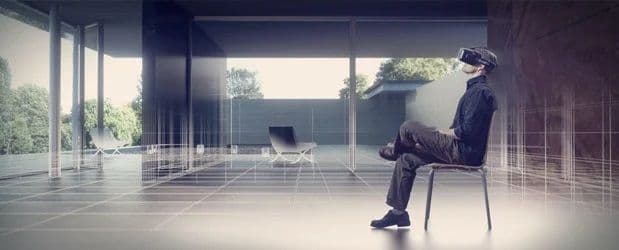The Potential Benefits of Using VR in Vestibular Therapy

Precise figures for the prevalence of vestibular disorders are difficult to pin down.
But recent studies suggest that some 35% of people aged over 40 in the US have suffered some degree of vestibular dysfunction; while at least another 5% have had problems with dizziness or balance.
Apart from the personal distress caused to sufferers, the social cost of these problems is likely to increase as the population ages. Unfortunately, although traditional rehabilitation therapies are often effective in relieving symptoms they also have some significant disadvantages.
Recent developments in virtual reality technology have therefore generated considerable interest in its potential use as an alternative.
The Potential Advantages of Using Virtual Reality in Vestibular Therapy
The artificial worlds created by virtual reality systems are becoming increasingly familiar through computer games and have been used commercially in areas such as pilot training for many years. Virtual reality has also been applied in the healthcare field since the early 1990s, but its use was initially restricted to surgical training, and the available technology was not sufficiently developed for use in general therapy.
Recent advances, however, and the successful use of virtual reality in treating a range of conditions such as acrophobia (fear of heights) and fear of flying, have encouraged the idea of virtual reality becoming a viable means of treating vestibular disorders.
One of the key benefits of virtual reality therapeutic systems is that the equipment can rapidly generate a wide range of visual and other stimuli, and precisely monitor patient responses within a safe, comfortable and standardized environment. The equipment is also much less cumbersome and easier to transport than traditional apparatuses. Like most new technologies, it is becoming less expensive and more available, and it may be possible for patients to use it at home in certain circumstances.
Some patients’ reluctance to persevere with the exercises involved in conventional therapies may be overcome through the fun “video game” nature of the virtual reality treatment. The equipment can also help patients by providing a more realistic and visually interesting environment, for example a virtual “shopping mall”, than the blank walls, checkerboards or archery targets traditionally used in gaze stabilization exercises.
For habituation, virtual reality allows for the rapid repetition and intensification of the symptom-inducing stimuli on which the success of this therapy depends; and it does this while avoiding any threat to the safety and comfort of the patient.
Conclusion
Although the research evidence so far available is limited, there is some suggestion that this very sense of relaxation which patients experience in virtual reality may lead to apparent improvements in vestibular performance, which do not translate into real world situations.
That said, there are a number of reputable studies indicating that virtual reality treatment may be at least as effective as conventional therapy in providing relief for the symptoms of vestibular disorders. As might be expected, these studies suggest that virtual reality may be particularly effective for patients who principally suffer from anxiety related to Space Motion Discomfort. The habituation allowed by virtual reality treatment may also help reduce conflict between patients’ visual, balance and other sensory systems.
Although the initial cost of the necessary VR equipment is still relatively high, this is a field in which technology is advancing rapidly. The expense may therefore be expected to fall significantly even as the equipment becomes more sophisticated. If that happens, VR can very well become a common platform for diagnosing and treating vestibular dysfunction.
